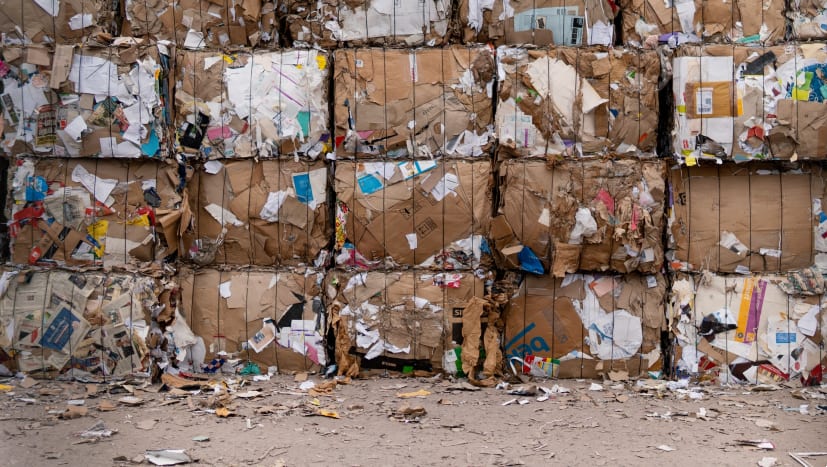Living in the Midwest provides us access to many resources. There is an abundance of fresh water for drinking, fertile soil for planting, and stable recycling markets. What? Yes, stable recycling markets!
Being in Ohio makes it more expensive to transport all materials, including recyclables, to either coast for shipping overseas. However, this export expense has also helped to create and build stable Midwest markets that willingly accept recyclable materials as feedstock.
The Cause
In 2018, China adopted a “National Sword” policy to ban imported recyclables since many shipments from the U.S. were contaminated with non-recyclables. However, China’s National Sword ban on exports also spurred the development of stable domestic markets. Since 2018, recycling processors in the Midwest responded by expanding or creating new facilities, resulting in an increase in price and a demand for clean recyclables.
For example, in October 2019, Pratt Industries opened a new paper mill in in Wapakoneta, Ohio. It uses mixed paper generated from recycling programs as raw material to create paperboard. The paperboard is subsequently used to create corrugated containers.
The Effect
The demand for domestic recycling markets has helped increase the value of sorted recyclables. Lower levels of contamination in materials processed as recyclables means a more valuable product and a higher market price too.
| Recycling Material | June 2019 | June 2021 | % Change |
| Mixed Paper | $2.50/ton | $62.50/ton | 2,500% increase |
| Corrugated Containers | $30.00/ton | $120.00/ton | 400% increase |
| Metal Steel Cans | $165.00/ton | $210.00/ton | 127% increase |
| Aluminum Cans | $0.56/lbs. | $0.73/lbs. | 130% increase |
| PET Plastic | $0.1463/lbs. | $0.2450/lbs. | 167% increase |
| Natural HDPE Plastic | $0.2075/lbs. | $1.045/lbs. | 504% increase |
| Colored HDPE Plastic | $0.1375/lbs. | $.5650/lbs. | 411% increase |
| Source: www.recyclingmarkets.net
Pricing based on baled materials recovered from recycling facilities |
|||
The Path Forward
Like all resources, we must be mindful of what we use, how we use it, and how we dispose of it. We must understand that a clean recyclable is a valuable commodity – a feedstock for a new product. Non-recyclable items are considered a contaminant. They adversely affect recycling operations, decrease the value of the good, recycled material, and must be disposed of as trash.
You can help support our Midwest recycling markets. The best way to do this is by making sure that you are recycling correctly.
- Recycle only clean, properly prepared items that are accepted in your local program.
- Prepare your recyclables for becoming something new. Make sure items are empty, clean, dry, and free of grease and food.
- Place items loose, not bagged, in your recycling container.
We need to “Recycle Right” so that these materials can become the resources that make new products. Let’s show everyone our Midwest “resourcefulness!”
POSTED ON:
